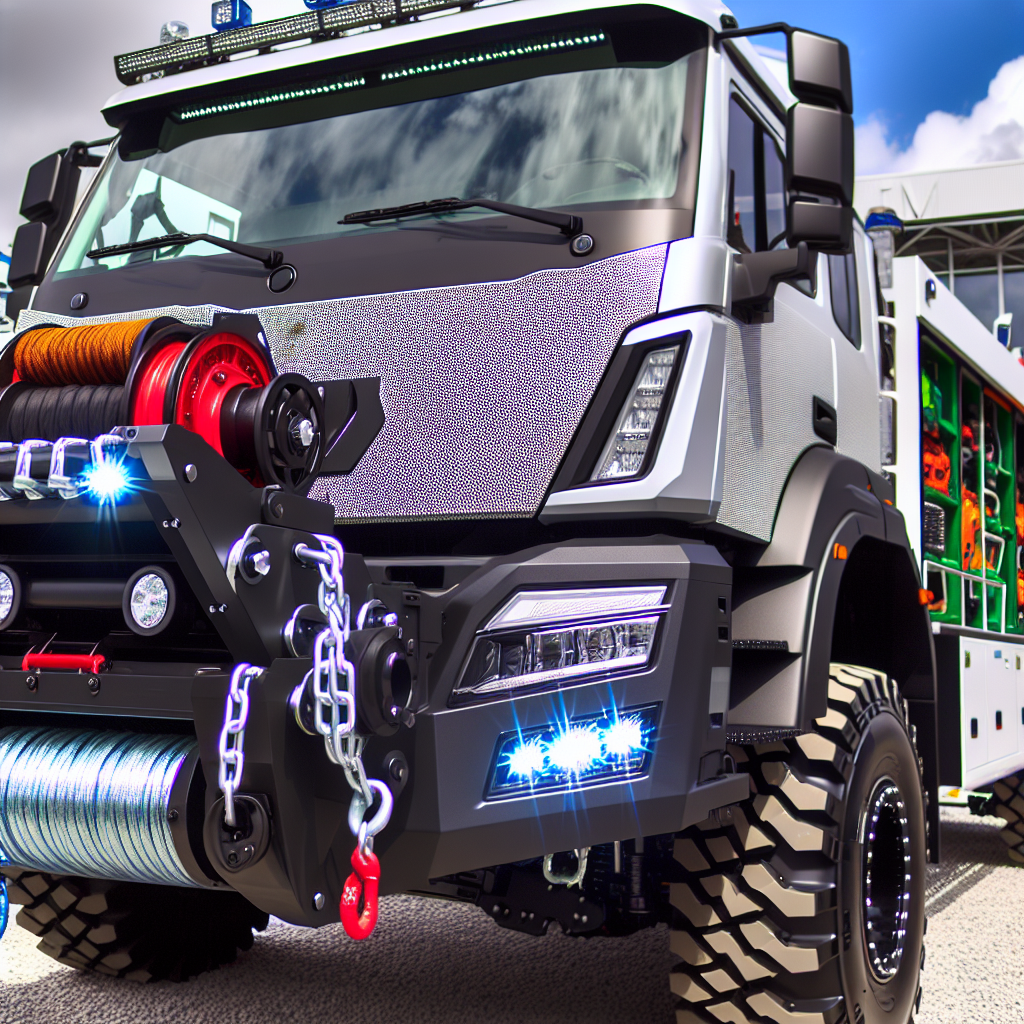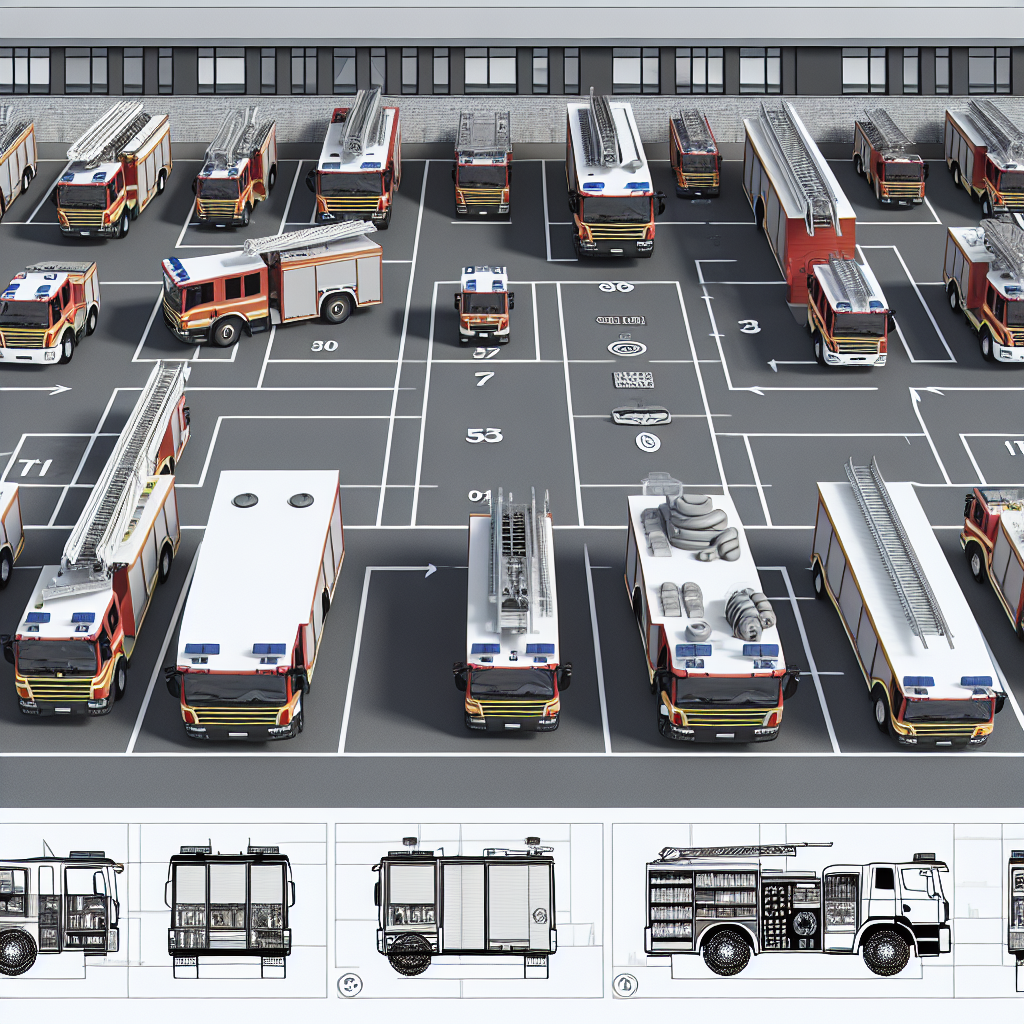In emergency services, the design and standardization of rescue fire trucks are crucial for operational efficiency. In rescue operations, where every second counts, the functionality and reliability of heavy-duty rescue apparatus can greatly affect outcomes.
These specialized vehicles not only carry advanced life-saving equipment, but they also help firefighters and responders work effectively in critical situations. By emphasizing standardization across these rescue apparatus, departments ensure uniform training and smooth integration with existing emergency management systems.
Thus, making informed decisions about fire truck design is not just about aesthetics; it is vital for improving safety and efficiency during rescue missions.


Standardization in the design and manufacturing of rescue fire trucks plays a crucial role in enhancing the efficiency of emergency services. For organizations like the Prince George’s County Fire/EMS Department (PGFD), implementing a standardization strategy has far-reaching benefits that can significantly impact their operations and service delivery. This strategy encompasses the following key areas:
- Operational Consistency: Standardization allows for uniform training and operational protocols, enabling firefighters to familiarize themselves with equipment regardless of the fire truck they are assigned to. In PGFD, this means that with a consistent design across their fleet, responders can quickly locate and use necessary tools and equipment during emergencies, which is essential in high-pressure situations.
- Reduced Costs: By standardizing components such as apparatus chassis, mechanical systems, and emergency equipment, the PGFD can streamline maintenance and parts procurement processes. This results in reduced training costs for technicians and quicker repair times, minimizing vehicle downtime. Cost savings can then be redirected towards other critical areas of the department’s operation.
- Improved Readiness: A standardized fleet ensures that all vehicles are uniformly equipped and maintained. This readiness means that PGFD can rapidly deploy their resources to emergency situations without delays caused by mismatched equipment or parts. It allows for a cohesive response strategy, where teams can rely on equipment performing consistently across various units.
Using the PGFD as a case study, the department’s commitment to standardization has led to significant operational benefits, demonstrating that a well-implemented strategy can not only enhance internal efficiency but also improve community service and safety.
Effectiveness of Walk-In Compartment Design
In reference to the effectiveness of walk-in compartment design, Richard Riley, Fire Apparatus Manager for the Prince George’s County Fire/EMS Department, stated:
“The traditional walk-in compartment design has proven its effectiveness over decades of rescue operations. For our department, protecting critical equipment combined with the ability to carry more crew made it the right choice.”
This design not only allows for better protection of vital equipment but also increases crew capacity significantly. Such features are critical in enhancing both the operational efficiency and overall safety during rescue missions.
| Feature | Apparatus A | Apparatus B | Apparatus C |
|---|---|---|---|
| Winch Capacity | 15,000 lbs | 12,000 lbs | 20,000 lbs |
| Compartment Design | Walk-in | Standard | Custom |
| Engine Power | 500 HP | 400 HP | 600 HP |
| Rescue Tool Compatibility | Comprehensive | Limited | Extensive |
| Weight Capacity | 26,000 lbs | 24,000 lbs | 30,000 lbs |
| Towing Capability | Yes | No | Yes |
| Lighting System | Yes | LED | Yes |
| Vehicle Stabilization System | Hydraulic + Chocks | Chocks | Hydraulic |
Fleet Standardization Strategies for Enhanced Fire Department Efficiency
Fleet standardization strategies play a pivotal role in enhancing operational consistency among fire departments, leading to improved efficiency and readiness. By implementing a cohesive approach to their vehicle fleet, fire departments can streamline operations, reduce costs, and enhance responder effectiveness in crisis situations. Here are some key strategies:
- Uniformity in Vehicle Specifications: Establishing standardized vehicle specifications ensures that all apparatus meet the same operational criteria. This can include specifications such as engine power, chassis design, and onboard equipment configurations. Having uniform vehicles simplifies training processes for firefighters, as personnel can quickly adjust to operating any vehicle in the fleet without the need for extensive familiarization with unique features or controls.
- Consistent Maintenance Protocols: Developing standardized maintenance schedules and procedures helps in maintaining vehicle readiness. When maintenance is uniform across the fleet, departments can schedule service more efficiently, ensuring that all vehicles are serviced at similar intervals, thus reducing downtime. Moreover, a consistent set of maintenance protocols can aid in predicting issues before they arise, enhancing the reliability of the fleet during emergencies.
- Centralized Procurement of Equipment and Parts: By standardizing the types of equipment and parts used across the fleet, departments can benefit from economies of scale. Purchasing in bulk or committing to long-term contracts with suppliers can lead to significant cost savings. This also simplifies inventory management and training for maintenance crews, as they will handle similar parts and tools across different vehicles.
- Improved Resource Allocation: A standardization strategy allows fire departments to respond better to incidents by ensuring that all apparatus are equipped similarly. This is vital during multi-unit responses where various vehicles may be deployed. When all units carry the same type of tools and equipment, there’s no confusion or hesitation on what resources are available, leading to a more efficient response to emergencies.
- Enhanced Training Opportunities: With a standardized fleet, training programs can be streamlined. Firefighters can undergo uniform training that highlights the operation and maintenance of similar vehicles, reducing the learning curve and improving skill retention. This consistent training approach leads to more competent and confident responders.
By prioritizing fleet standardization, fire departments not only enhance their operational consistency but also achieve long-term financial stability through reduced costs and improved readiness for emergency responses. This strategy aligns with the mission of fire services, enabling them to serve their communities more effectively and efficiently.
Summary of User Adoption and Performance Metrics of Heavy-Duty Rescue Apparatus – Rescue Squad No.820
Rescue Squad No.820 of the Prince George’s County Fire/EMS Department exemplifies the effective integration of heavy-duty rescue apparatus into emergency services. In 2024, the squad recorded over 1,800 responses, showcasing its pivotal role in addressing various emergency situations.
The operational capacity of Rescue Squad No.820 is centered around three primary response types:
- Vehicle Accidents: This includes direct responses that necessitate advanced extrication capabilities to save lives.
- Medical Emergencies: Specialized equipment and trained personnel enable effective management of critical health situations.
- Structure Fires: The apparatus is equipped to perform immediate rescue operations in buildings under threat.
The heavy-duty rescue apparatus, built on a Pierce® Enforcer™ chassis, boasts impressive features such as a 15,000-pound winch, enhancing its capability to extract victims from vehicles or dangerous situations effectively.
The department’s strategy emphasizes standardization, allowing for:
- Streamlined Training: Personnel can quickly adapt to the apparatus, leading to improved operational familiarity.
- Improved Maintenance: Standardized parts and equipment reduce downtime, ensuring readiness when emergencies arise.
- Cost Efficiency: Bulk purchasing and consistent vehicle maintenance result in significant cost savings over time.
By focusing on standardization and user adoption of advanced rescue apparatus, the Prince George’s County Fire/EMS Department aims to improve overall response times and operational effectiveness, underscoring how strategic design and deployment of equipment can save lives and enhance community safety.
User Adoption Data on Heavy-Duty Rescue Apparatus
Relevant Case Studies and Data Sources
- The Prince George’s County Fire/EMS Department (PGFD) has executed several initiatives to enhance the adoption and performance of heavy-duty rescue apparatus. For detailed insights into their strategies, check out this case study on standardization by Pierce Manufacturing.
- PGFD’s strategic plan for the apparatus replacement program is detailed in their official blog, showcasing their commitment to maintaining a modern fleet.
- For information on their digital dashboard initiative aimed at enhancing operational efficiency, visit First Arriving.
- Additionally, a broader analysis of response times and the impact of technology on emergency services can be found in the article on emergency response time statistics.
These initiatives collectively showcase PGFD’s commitment to improving user adoption and operational performance through effective strategies in their heavy-duty rescue apparatus.
In conclusion, the design and standardization of rescue fire trucks are integral to enhancing operational efficiency within fire departments. By prioritizing these elements, departments can ensure that their apparatus not only meet the demands of emergency situations but also allow for efficient training and resource allocation. Standardized vehicles facilitate seamless integration among crews, reduce maintenance costs, and improve overall responsiveness during critical incidents. As fire departments look to upgrade or acquire new vehicles, it is essential to consider these factors when developing specifications. Embracing a strategy that emphasizes design standardization will lead to improved safety, effectiveness, and ultimately better service to the communities they protect. By making informed decisions about fire truck design, departments can enhance their operational capabilities and ensure they are always prepared to meet the challenges of emergency response.
Call to Action: For departments eager to improve their rescue operations, we encourage contacting our expert team to discuss how standardization can elevate your fleet’s performance. Additionally, visit our resource page for insights and further information on the latest trends and strategies in fire truck design and standardization.
In the words of industry experts, “Standardizing heavy rescue operations offers significant benefits in enhancing operational efficiency and fleet readiness.” This approach, exemplified by the Prince George’s County Fire/EMS Department, highlights the impact of mechanical consistency and equipment uniformity. Such a strategy reduces diagnostic and troubleshooting time, simplifies maintenance, and allows crews to locate essential tools swiftly, even in unfamiliar apparatus operations. Emphasizing the importance of standardization can undoubtedly enhance the effectiveness of rescue operations and the overall safety of emergency responders.
Summary of Fleet Standardization Strategies
- Uniformity in Vehicle Specifications: Ensures all apparatus meet the same operational criteria, simplifying the training process for firefighters.
- Consistent Maintenance Protocols: Helps maintain vehicle readiness through efficient scheduling and procedures.
- Centralized Procurement of Equipment and Parts: Facilitates bulk purchasing strategies that lead to significant cost savings and simplifies inventory management.
- Improved Resource Allocation: Ensures all apparatus are similarly equipped for quick responses during emergencies.
- Enhanced Training Opportunities: Streamlines training programs for firefighters, improving their operational efficiency and confidence.
